I was asked what Id build for a good performance engine in a weekend toy, well as many of you know I,m partial to some early two door Pontiac body styles and some corvettes and mopar cars.
I,m also rather fond of big block chevy and larger hemi engines
but because chevy parts are much less difficult to locate and tend to be less costly, Id build a 540-598 cid big block chevy
yup! hard to beat the value in hp/vs cost outlay,
in a well designed and carefully assembled, BBC
if your willing to build a fairly high compression version that runs race octane fuel or E85 you can get amazing power, Ive build several dozen 496 BBC engines over the past 4 decades , and getting 600hp-800hp, or more or more depending on your checking account balance and how willing you are too hear it scream in agony, as you rip its heart out, if youve got a reasonable budget is no big challenge , especially if you select the better aftermarket aluminum heads
viewtopic.php?f=38&t=898&p=1494#p1494
http://www.morrisonoz.com/ChevManifolds.html
http://scatcrankshafts.com/

common BB CHEVY piston compression heights are
1.270"
1.395"
1.520"
1.645"
1.765"
remember the blocks deck height, minus the piston pin height minus 1/2 the crank stroke will equal the required connecting rod length
OR
the blocks deck height, minus the connecting rod length, minus 1/2 the crank stroke. will equal the required piston pin height
yes its common for a combo to have the piston deck height located .010-.015 above or below the deck of the block so you'll need to select a head gasket thickness that compensates, too allow your engine to get a .038-.044 piston deck to cylinder head QUENCH DISTANCE.
well if money was not the major concern Id start by finding a fairly light car with a good suspension like a dana 60 rear differential,3.73:1 rear gears, and a reworked 4l80E trans with a 3400rpm stall converter,ideally something like a 1965-70 pontiac two door or a c4 corvette,
http://www.monstertransmission.com/Supe ... _4018.html
lets say we start with a 1965-70 GTO body with and aftermarket frame, wildwood disc brakes on all four 18" wheels, and a full roll cage, aluminum trunk, fenders and hood and bumpers two recaro race seats
Id have an 8 quart baffled oil pan, with a oil accumulator and oil cooler holding an additional 4 quarts, Id have the largest most efficient radiator and trans cooler i could find that would fit into the car.
DART BIG M BLOCK
http://www.jegs.com/i/Dart/301/31273454 ... ProductId=
tall deck block 10.2' deck, 4.5" bore

SCAT forged crank/rotating assembly 572 displacement , with mid 11.5:1 compression
http://scatcrankshafts.com/images/crank ... n_2013.pdf

crane solid roller cam
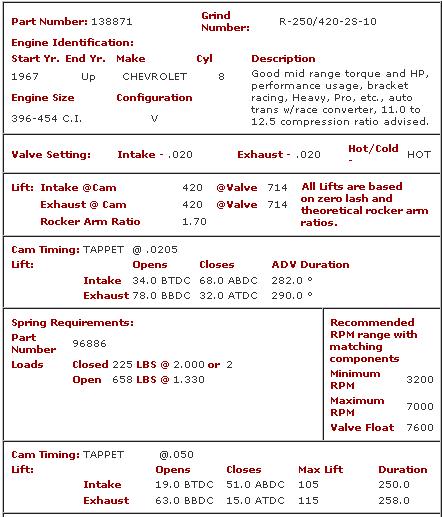
because this would be a hot street and not a true race car , I,d get nostalgic, and get a stack injection
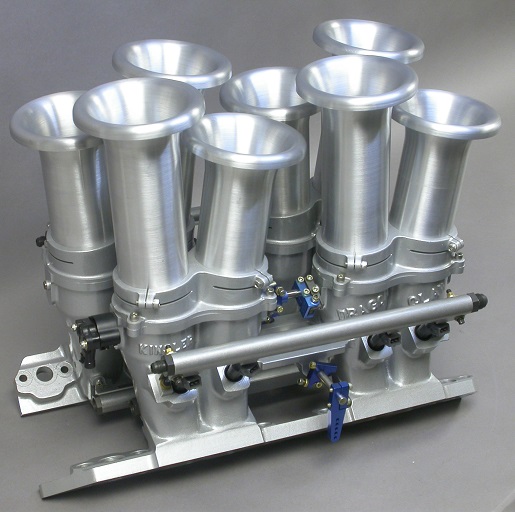
http://hilborninjection.com/product.asp ... &CatId=174
ID point out that runner air mass & charge inertia stacking up behind the intake valve is at least partly influenced by the length and cross sectional area, in the same way that header primary length & cross sectional has an effect on the DRAW, or negative pressure wave that helps draw in the next intake charge during valve overlap, thats one factor that tends to make the use of tighter LSA, in cams used with stack injection, and use of open headers with a longer effective header collector length, have a wider torque curve in my experience.
its also a factor in why larger diameter cross sectional area , moves the effective torque curve higher in the rpm range and why running a bit richer fuel air ratio tends to run a bit better using stack injection or tunnel ram intakes and to a lesser extent single plane vs dual plane intakes.
that longer and effectively greater mass of intake charge and matching mass of exhaust gasses, have a combined and effectively complimentary effect at higher rpms during that period of valve timing OVERLAP, that greatly adds to cylinder scavenging, as it helps remove spent /burnt exhaust gases, and once the exhaust valve seats the inertia ram effect helps stack a bit more volume of intake charge into the cylinder.
you can feel this and see it in dyno graphs if you compare a stack injection and properly matched header with a tight LSA cam in a high compression engine, vs the basically similar combo with a single plane intake , where you see a marked loss of power in the single plane intake vs the stack injection on what would otherwise be almost identical engine combos, where the shorter and lesser intake charge mass just can't match the cylinder scavenging efficiency, at stacking more intake mass of F/A or scavenging the exhaust as effectively.
I've always rather been amused at the reaction I've seen when I suggest stack injection or a properly tuned tunnel ram intake and a tighter LSA cam, may noticeably boost the engine power band, most guys just don't think there's potentially that much power to be gained, with the swap, and seem shocked and pleasantly surprised with the difference in seat of the pants acceleration/torque they can feel.
I know that the difference when I ran crower stack injection was an instant 3 tenths faster and several extra MPH in the lights
just swapping intakes styles (dominator/single plane vs crower stack injection) on my 13.7:1 COMPRESSION RATIO, 496 BBC

CROWER no longer sells the exact cam I used but it was very similar to the current
#01486
 www.crower.com
www.crower.com

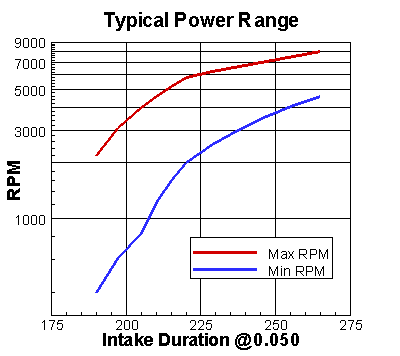
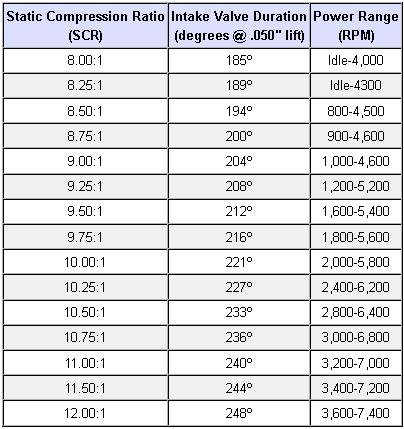
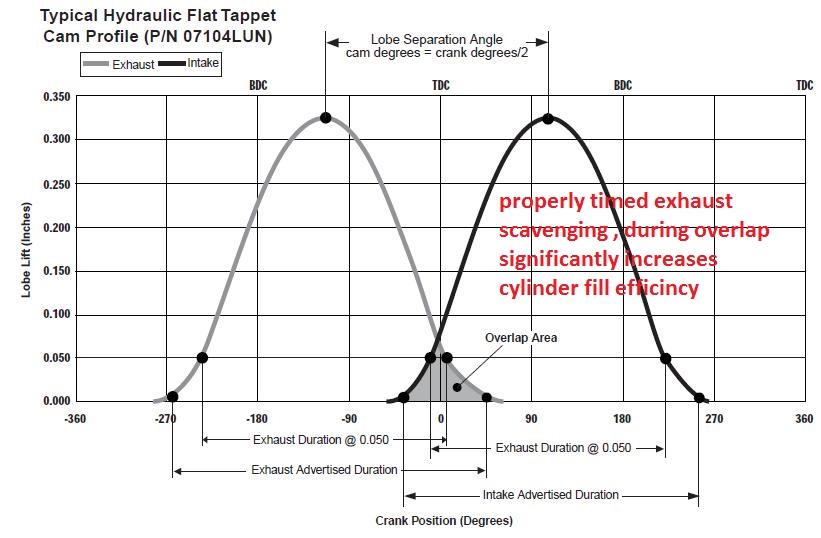

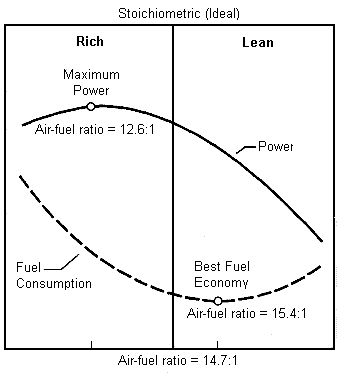
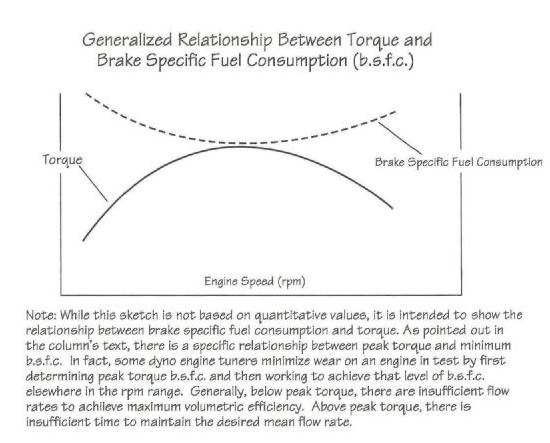
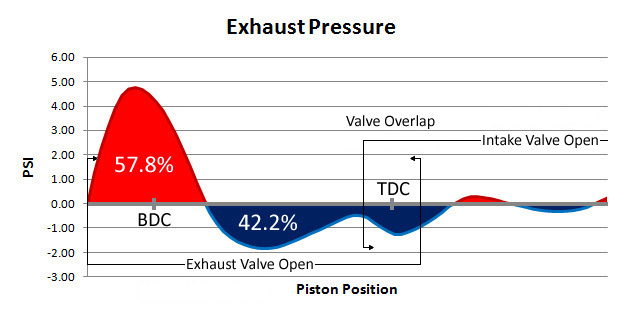

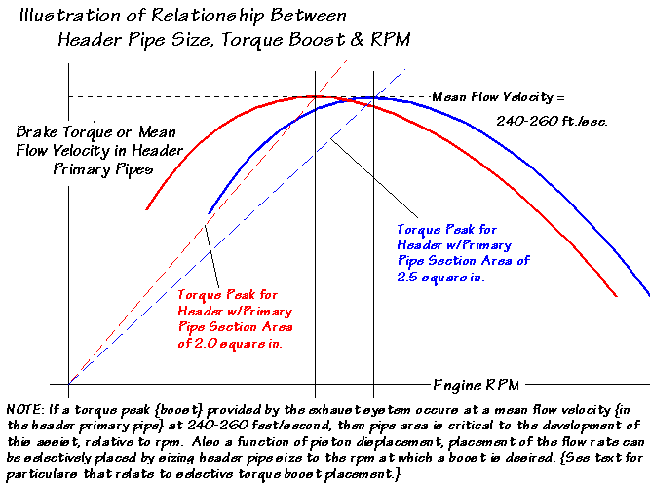
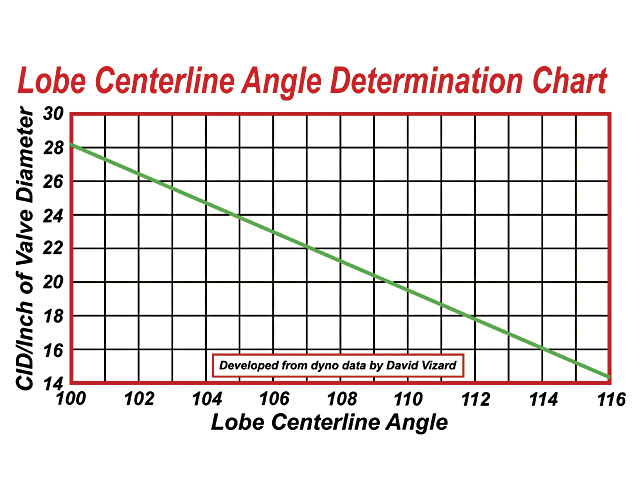
AFR 335cc cnc ported heads
http://www.airflowresearch.com/index.php?cPath=68_69
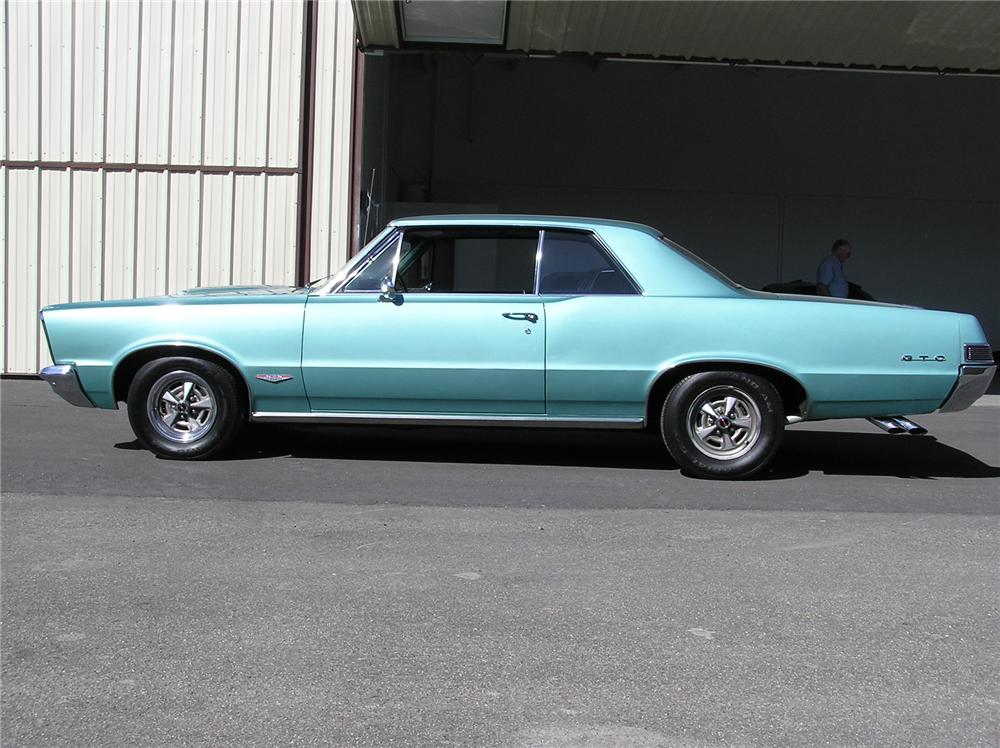
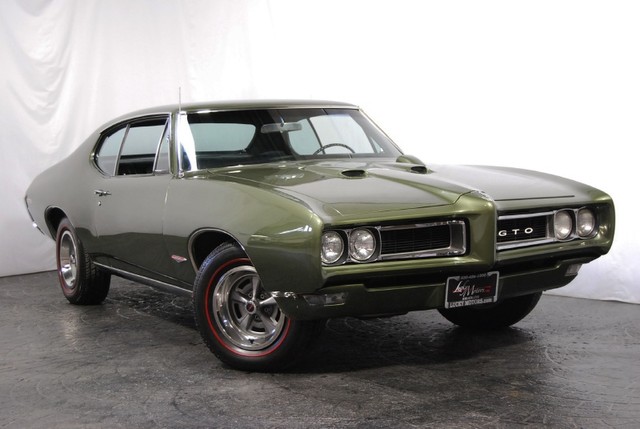
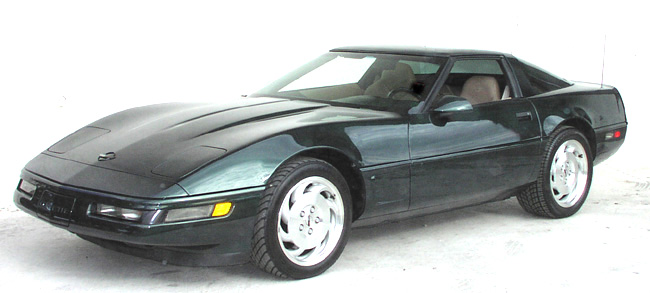
there ARE several suppliers of adapter tail housings for the conversion of a much stronger 4l80E transmission to the C4 corvettes C-beam support
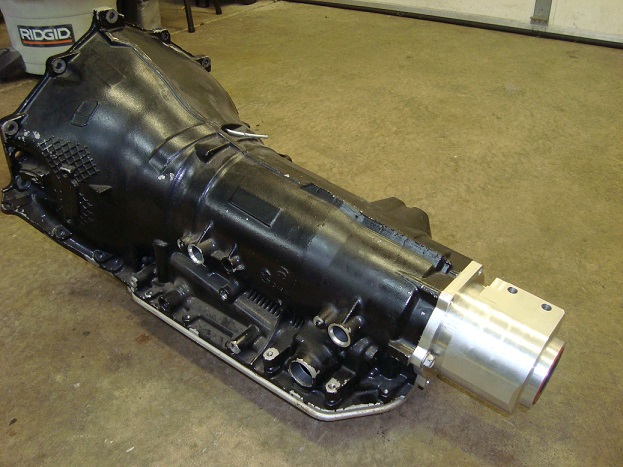
and a DANA 60 disc brake rear differential
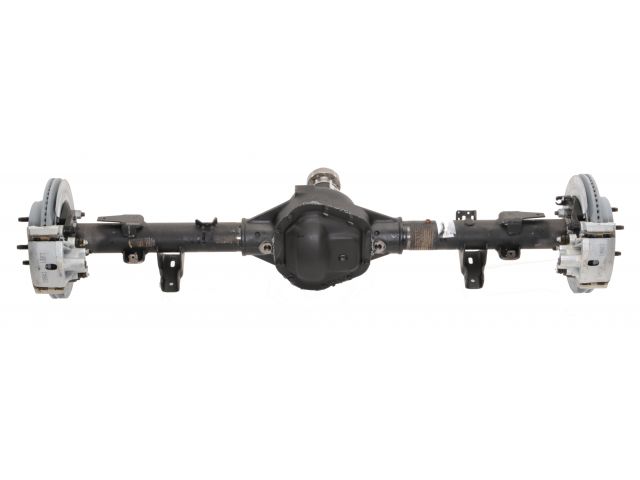

If I still owned a C3 corvette, and had $10K or so to spend on a new engine, theres no question at all in my mind that Id have chrome side exhaust and a serious 496-572 big block engine installed in the engine compartment.
500hp SBC are about as common a mustangs and camaros with owners that think they own a fast car, you only live once, build something MEMORABLE and IMPRESSIVE!
I had a 1968 with a full roll cage a 496 BBC and a dana rear at one point and I had lot of memories made in that car, and while it was virtually useless, because any place I drove it I had to park it where I could watch it, and it seemed to attract a police car following it rather rapidly, as I had crower injection sticking out of the hood. it was still a real fun car to drive, as I could smoke street tires effortlessly even from a 60 mph roll.
http://www.herbertcams.com/dhp-555-street-chevrolet-big-block-engine-675hp/
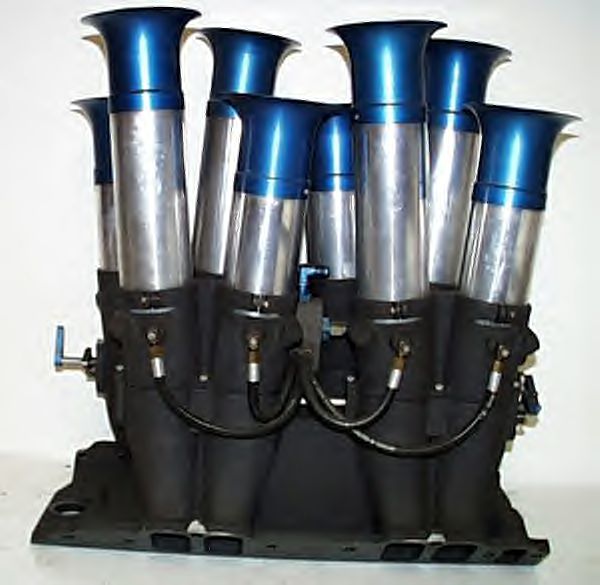
the parts are not cheap but anything you want is still available
https://kinsler.com/Shop/product-category/pumps/mechanical-pump-drives/
http://hilborninjection.com/mechanical-fuel-injection-systems/
http://www.alkydigger.net/index.php...HV1N5tlrtW9QjBZzUG7NPEHP7YD1eVzAaAsNNEALw_wcB
theres certainly advantages to using alcohol ,
significantly cooler engine temps and a bit better power without any doubts.
but one thing I learned using alcohol in any race engine was to be damn sure you remembered,
to run the engine on straight 100% gas,with a dash of MMO,
for a couple minutes before you turn it off and park the car
if you don,t youll have an amazing amount of corrosion related issues in a car thats parked for a week or more between usages
my 1968 corvette with a big block 496, running METHANOL and crower injection, it looked vaguely like this picture,when I tried alcohol for a short time,
mine was Burgundy and a chrome bumper corvette of course
that required a quick disconnect fuel cell, so I could quickly swap fuel tanks,
I had a 15 gallon fuel cell in the corvette, filed with METHANOL, and a quart of MMO, and a jury rigged 5 gallon fuel can, filled with 115 octane gas and a pint of MMO, we carried separately , too the track,
with the proper quick connect connectors to run the car from for a few minutes ,
before we parked it for any length of time to reduce the chances of corrosion.

http://garage.grumpysperformance.com/index.php?threads/build-a-496-stroker-bbc.101/#post-15067
my corvette was a burgundy, chrome bumper 1968,
with crower injection like the picture of the silver one above
, sticking through the hood
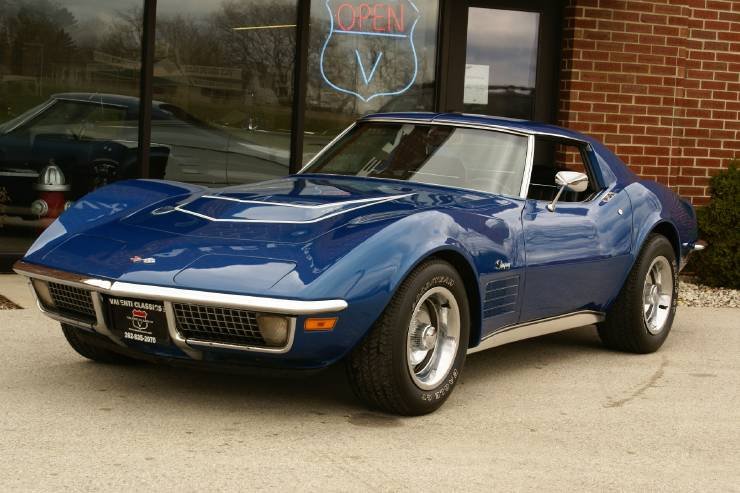
if you can visualize a chrome bumper corvette similar to this picture,
with those stack injectors sticking thru the hood in a burgundy colored corvette,
with larger rear wheel flares a tubed rear with huge tires,
and a full roll cage you be visualizing something similar too what I was driving for about 10 years.
back in the early 1970s I had several cars that ran high 10 seconds in the 1/4 mile,
the first was a 1965 lemans with a l88 BBC 427 chevy engine then later, I installed a 496 BBC with dual quads ran mid 10s,(it was not the fastest but it was the most fun to drive,
later I had a 1969 camaro with a ls7 454 BBC engine
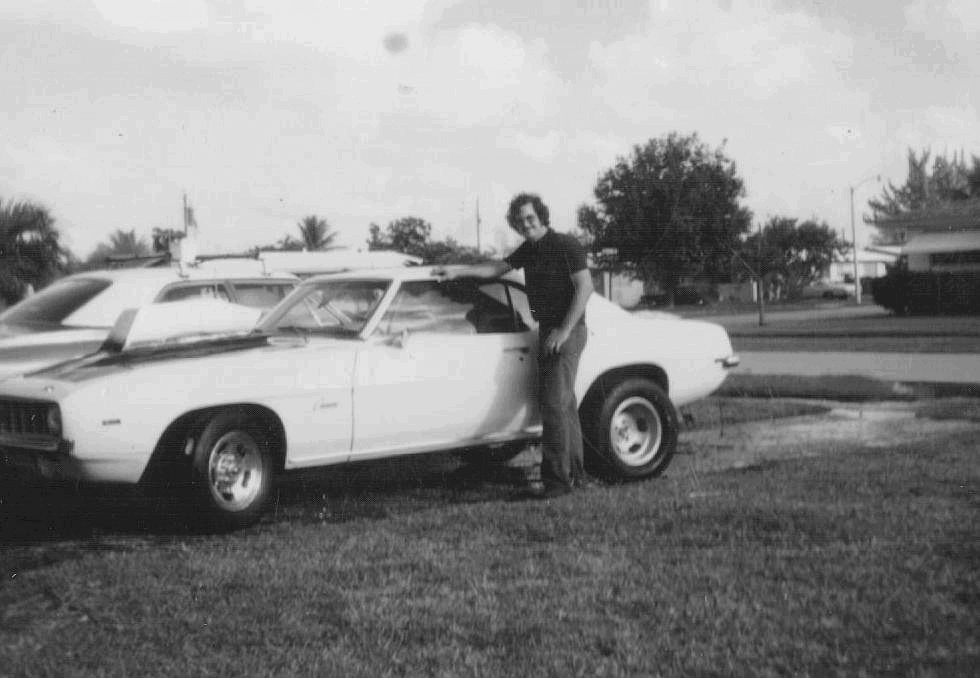
low 10 seconds with,
a 1968 corvette with a 13.7:1 compression 496 BBC
with me personally its the 496 BBC powered 1965 lemans I once owned,
(My old 1965 le-mans could have been nearly the twin of the black,car pictured below)
that looked almost identical too these pictures, I found posted on the internet.
it was not the fastest car or the best handling, my 1968 corvette was noticeably faster,
and handled better than the lemans, but for general fun, and easy access and many pleasant memories that 1965 lemans is the one I miss most!
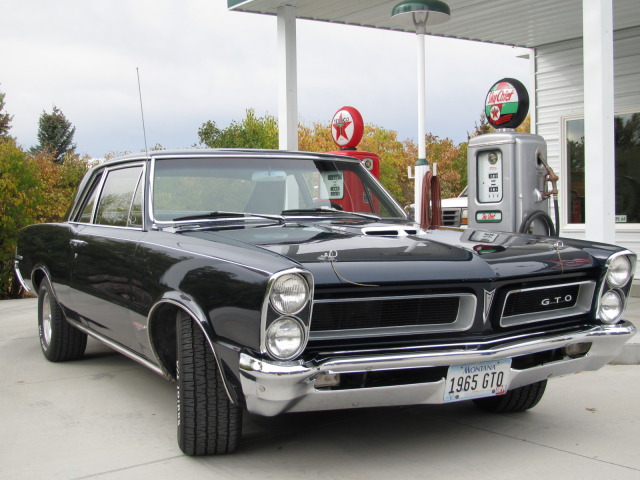
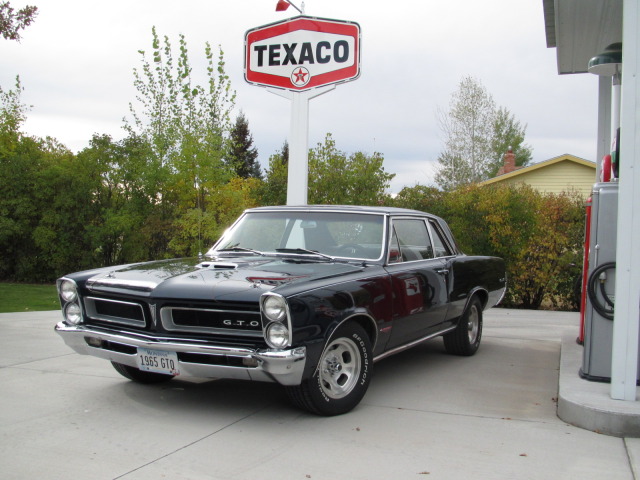
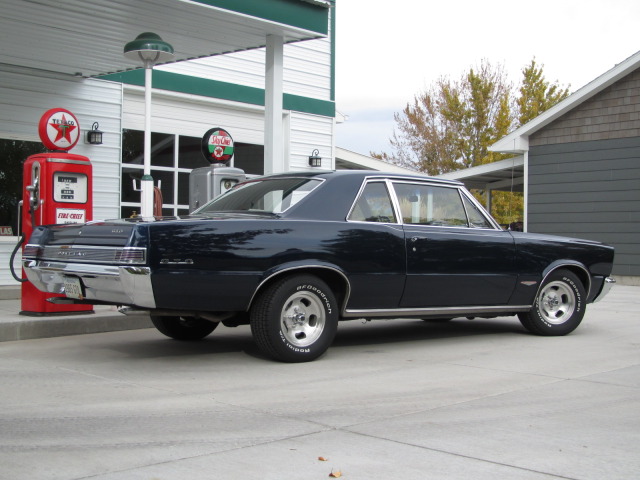
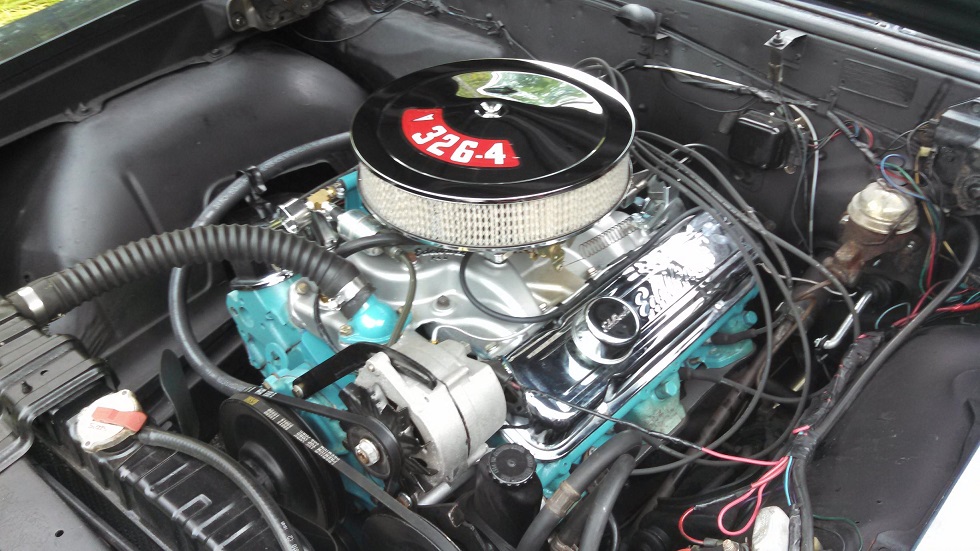
and after a few minutes it was obvious that it was a darn PLEASURE to have that much room in an engine compartment just to access most of the engine, so much so, that I started to wonder WHY I even bother working on with most of the post 1970-75 cars with all the smog and computer crap and tight engine compartments, O worked on a 1964 GTO awhile back, and that was even MORE open and fun to work on, If I get a chance to find a 1965 GTO,lemans or similar 1964-1972 G.M intermediate car with a good BODY and interior condition at a decent price Im sure thinking about hard jumping on it faster than a crack addict on a stack of $20 in a vacant lot!
ESPECIALLY, A 1965-67 PONTIAC, or BUICK two door mid size car, the problem is that like most guys Im on a strict budget that limits my projects.
maybe Im a bit nostalgic but I think the 1965 Pontiac mid size was a very nice looking car, I wish Id never sold mine.
http://www.newcenturyperformance.com/Blocks.htm
http://garage.grumpysperformance.co...d-what-goes-in-the-dumpster.13135/#post-68515
ASK LOTS TO QUESTIONS & SHOP CAREFULLY,
the better aftermarket aluminum blocks are both comparatively very expensive and noticeably lighter weight,
but do your research, as theres a big BIG difference in the structural rigidity, and strength, between the thicker aluminum blocks
designed for serious racing and those designed mostly to reduce weight, and duplicate the original iron block dimension-ally
interesting new option
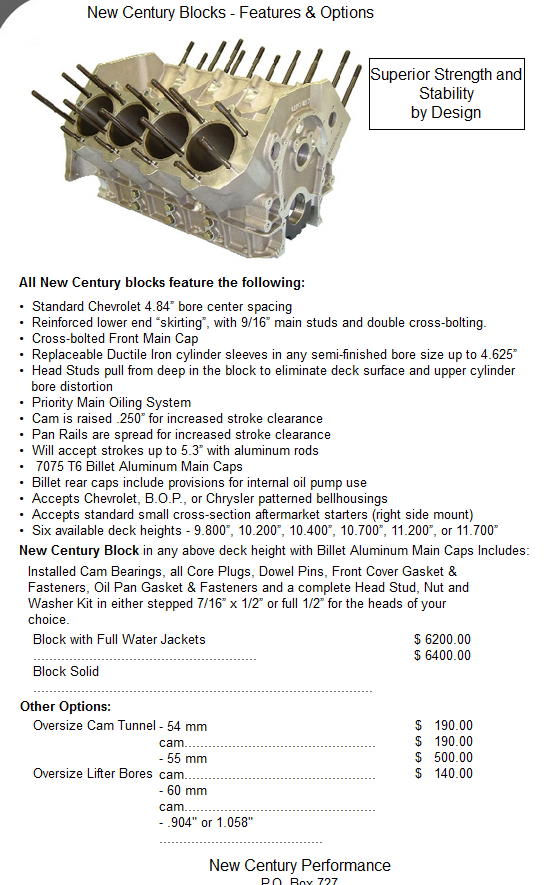


I,m also rather fond of big block chevy and larger hemi engines
but because chevy parts are much less difficult to locate and tend to be less costly, Id build a 540-598 cid big block chevy
yup! hard to beat the value in hp/vs cost outlay,
in a well designed and carefully assembled, BBC
if your willing to build a fairly high compression version that runs race octane fuel or E85 you can get amazing power, Ive build several dozen 496 BBC engines over the past 4 decades , and getting 600hp-800hp, or more or more depending on your checking account balance and how willing you are too hear it scream in agony, as you rip its heart out, if youve got a reasonable budget is no big challenge , especially if you select the better aftermarket aluminum heads
viewtopic.php?f=38&t=898&p=1494#p1494
http://www.morrisonoz.com/ChevManifolds.html
http://scatcrankshafts.com/

common BB CHEVY piston compression heights are
1.270"
1.395"
1.520"
1.645"
1.765"
remember the blocks deck height, minus the piston pin height minus 1/2 the crank stroke will equal the required connecting rod length
OR
the blocks deck height, minus the connecting rod length, minus 1/2 the crank stroke. will equal the required piston pin height
yes its common for a combo to have the piston deck height located .010-.015 above or below the deck of the block so you'll need to select a head gasket thickness that compensates, too allow your engine to get a .038-.044 piston deck to cylinder head QUENCH DISTANCE.
well if money was not the major concern Id start by finding a fairly light car with a good suspension like a dana 60 rear differential,3.73:1 rear gears, and a reworked 4l80E trans with a 3400rpm stall converter,ideally something like a 1965-70 pontiac two door or a c4 corvette,
http://www.monstertransmission.com/Supe ... _4018.html
lets say we start with a 1965-70 GTO body with and aftermarket frame, wildwood disc brakes on all four 18" wheels, and a full roll cage, aluminum trunk, fenders and hood and bumpers two recaro race seats
Id have an 8 quart baffled oil pan, with a oil accumulator and oil cooler holding an additional 4 quarts, Id have the largest most efficient radiator and trans cooler i could find that would fit into the car.
DART BIG M BLOCK
http://www.jegs.com/i/Dart/301/31273454 ... ProductId=
tall deck block 10.2' deck, 4.5" bore

SCAT forged crank/rotating assembly 572 displacement , with mid 11.5:1 compression
http://scatcrankshafts.com/images/crank ... n_2013.pdf

crane solid roller cam

because this would be a hot street and not a true race car , I,d get nostalgic, and get a stack injection

http://hilborninjection.com/product.asp ... &CatId=174
ID point out that runner air mass & charge inertia stacking up behind the intake valve is at least partly influenced by the length and cross sectional area, in the same way that header primary length & cross sectional has an effect on the DRAW, or negative pressure wave that helps draw in the next intake charge during valve overlap, thats one factor that tends to make the use of tighter LSA, in cams used with stack injection, and use of open headers with a longer effective header collector length, have a wider torque curve in my experience.
its also a factor in why larger diameter cross sectional area , moves the effective torque curve higher in the rpm range and why running a bit richer fuel air ratio tends to run a bit better using stack injection or tunnel ram intakes and to a lesser extent single plane vs dual plane intakes.
that longer and effectively greater mass of intake charge and matching mass of exhaust gasses, have a combined and effectively complimentary effect at higher rpms during that period of valve timing OVERLAP, that greatly adds to cylinder scavenging, as it helps remove spent /burnt exhaust gases, and once the exhaust valve seats the inertia ram effect helps stack a bit more volume of intake charge into the cylinder.
you can feel this and see it in dyno graphs if you compare a stack injection and properly matched header with a tight LSA cam in a high compression engine, vs the basically similar combo with a single plane intake , where you see a marked loss of power in the single plane intake vs the stack injection on what would otherwise be almost identical engine combos, where the shorter and lesser intake charge mass just can't match the cylinder scavenging efficiency, at stacking more intake mass of F/A or scavenging the exhaust as effectively.
I've always rather been amused at the reaction I've seen when I suggest stack injection or a properly tuned tunnel ram intake and a tighter LSA cam, may noticeably boost the engine power band, most guys just don't think there's potentially that much power to be gained, with the swap, and seem shocked and pleasantly surprised with the difference in seat of the pants acceleration/torque they can feel.
I know that the difference when I ran crower stack injection was an instant 3 tenths faster and several extra MPH in the lights
just swapping intakes styles (dominator/single plane vs crower stack injection) on my 13.7:1 COMPRESSION RATIO, 496 BBC
CROWER no longer sells the exact cam I used but it was very similar to the current
#01486
Chevrolet Mechanical Roller Camshaft - Camshafts
Chevy 396-454 Roller 8620 Steel Billet Camshaft










AFR 335cc cnc ported heads
http://www.airflowresearch.com/index.php?cPath=68_69



there ARE several suppliers of adapter tail housings for the conversion of a much stronger 4l80E transmission to the C4 corvettes C-beam support

and a DANA 60 disc brake rear differential


DO2G said:I’m trying to decide if a 500HP/500Torque SBC crate engine is worth the expense ($8K – $10K).
Currently, I have a L-82 (4 speed) with Brodix IK180 heads, true dual exhaust with Stan’s Tri-Y headers, Lunati 60101 Cam and 3.73 gears.
I have no idea what my HP is today, but would I notice a big difference in buying a 500HP crate motor compared to what I have today?
If I still owned a C3 corvette, and had $10K or so to spend on a new engine, theres no question at all in my mind that Id have chrome side exhaust and a serious 496-572 big block engine installed in the engine compartment.
500hp SBC are about as common a mustangs and camaros with owners that think they own a fast car, you only live once, build something MEMORABLE and IMPRESSIVE!
I had a 1968 with a full roll cage a 496 BBC and a dana rear at one point and I had lot of memories made in that car, and while it was virtually useless, because any place I drove it I had to park it where I could watch it, and it seemed to attract a police car following it rather rapidly, as I had crower injection sticking out of the hood. it was still a real fun car to drive, as I could smoke street tires effortlessly even from a 60 mph roll.
http://www.herbertcams.com/dhp-555-street-chevrolet-big-block-engine-675hp/

the parts are not cheap but anything you want is still available
https://kinsler.com/Shop/product-category/pumps/mechanical-pump-drives/
http://hilborninjection.com/mechanical-fuel-injection-systems/
http://www.alkydigger.net/index.php...HV1N5tlrtW9QjBZzUG7NPEHP7YD1eVzAaAsNNEALw_wcB
theres certainly advantages to using alcohol ,
significantly cooler engine temps and a bit better power without any doubts.
but one thing I learned using alcohol in any race engine was to be damn sure you remembered,
to run the engine on straight 100% gas,with a dash of MMO,
for a couple minutes before you turn it off and park the car
if you don,t youll have an amazing amount of corrosion related issues in a car thats parked for a week or more between usages
my 1968 corvette with a big block 496, running METHANOL and crower injection, it looked vaguely like this picture,when I tried alcohol for a short time,
mine was Burgundy and a chrome bumper corvette of course
that required a quick disconnect fuel cell, so I could quickly swap fuel tanks,
I had a 15 gallon fuel cell in the corvette, filed with METHANOL, and a quart of MMO, and a jury rigged 5 gallon fuel can, filled with 115 octane gas and a pint of MMO, we carried separately , too the track,
with the proper quick connect connectors to run the car from for a few minutes ,
before we parked it for any length of time to reduce the chances of corrosion.

http://garage.grumpysperformance.com/index.php?threads/build-a-496-stroker-bbc.101/#post-15067
my corvette was a burgundy, chrome bumper 1968,
with crower injection like the picture of the silver one above
, sticking through the hood

if you can visualize a chrome bumper corvette similar to this picture,
with those stack injectors sticking thru the hood in a burgundy colored corvette,
with larger rear wheel flares a tubed rear with huge tires,
and a full roll cage you be visualizing something similar too what I was driving for about 10 years.
back in the early 1970s I had several cars that ran high 10 seconds in the 1/4 mile,
the first was a 1965 lemans with a l88 BBC 427 chevy engine then later, I installed a 496 BBC with dual quads ran mid 10s,(it was not the fastest but it was the most fun to drive,
later I had a 1969 camaro with a ls7 454 BBC engine

low 10 seconds with,
a 1968 corvette with a 13.7:1 compression 496 BBC
with me personally its the 496 BBC powered 1965 lemans I once owned,
(My old 1965 le-mans could have been nearly the twin of the black,car pictured below)
that looked almost identical too these pictures, I found posted on the internet.
it was not the fastest car or the best handling, my 1968 corvette was noticeably faster,
and handled better than the lemans, but for general fun, and easy access and many pleasant memories that 1965 lemans is the one I miss most!




and after a few minutes it was obvious that it was a darn PLEASURE to have that much room in an engine compartment just to access most of the engine, so much so, that I started to wonder WHY I even bother working on with most of the post 1970-75 cars with all the smog and computer crap and tight engine compartments, O worked on a 1964 GTO awhile back, and that was even MORE open and fun to work on, If I get a chance to find a 1965 GTO,lemans or similar 1964-1972 G.M intermediate car with a good BODY and interior condition at a decent price Im sure thinking about hard jumping on it faster than a crack addict on a stack of $20 in a vacant lot!
ESPECIALLY, A 1965-67 PONTIAC, or BUICK two door mid size car, the problem is that like most guys Im on a strict budget that limits my projects.
maybe Im a bit nostalgic but I think the 1965 Pontiac mid size was a very nice looking car, I wish Id never sold mine.
http://www.newcenturyperformance.com/Blocks.htm
http://garage.grumpysperformance.co...d-what-goes-in-the-dumpster.13135/#post-68515
ASK LOTS TO QUESTIONS & SHOP CAREFULLY,
the better aftermarket aluminum blocks are both comparatively very expensive and noticeably lighter weight,
but do your research, as theres a big BIG difference in the structural rigidity, and strength, between the thicker aluminum blocks
designed for serious racing and those designed mostly to reduce weight, and duplicate the original iron block dimension-ally
interesting new option



Last edited by a moderator:
